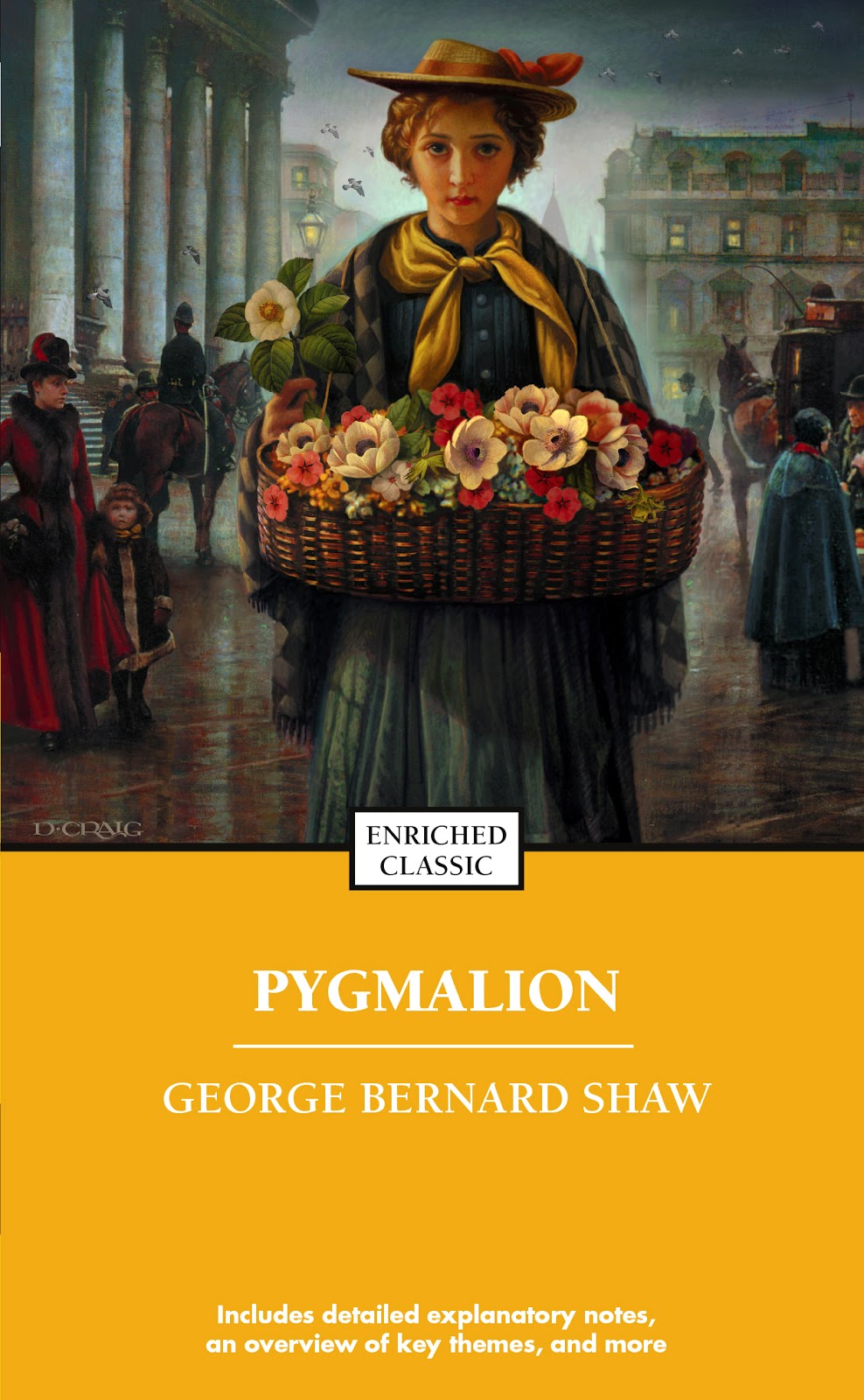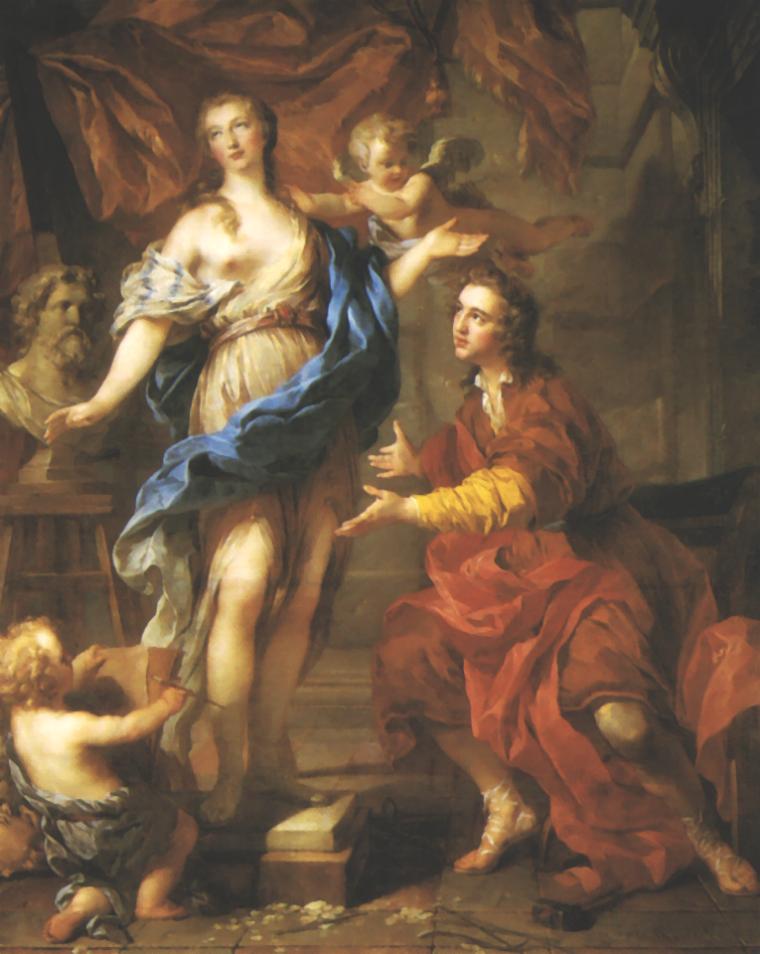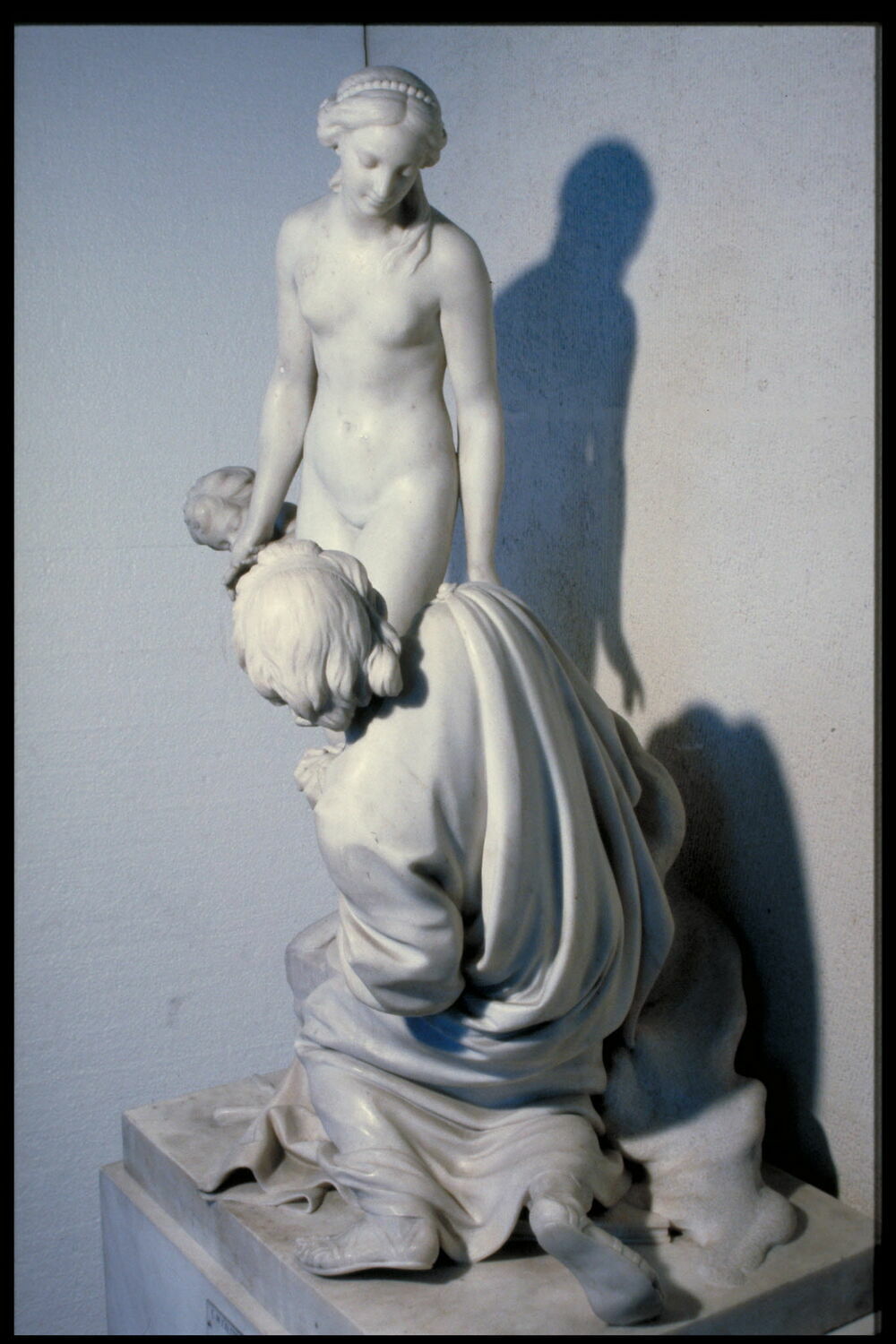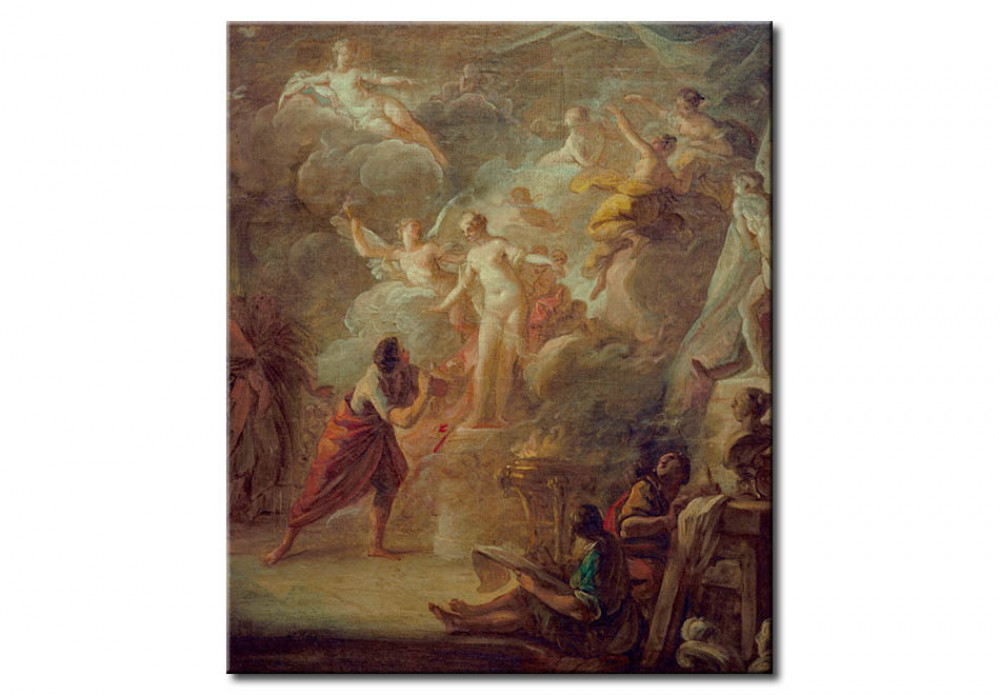
Pygmalion JungleKey.fr Image 150
Ces questionnements trouvent leurs origines dans le mythe de Pygmalion et de Galatée. Façonner un être parfait à ses yeux, voilà ce que fit Pygmalion, le roi de Chypre descendant d'Athéna.

Pygmalion De Griekse Mythe YouTube
Pygmalion Adoring His Statue by Jean Raoux, 1717. In Greek mythology, Pygmalion (/ p ɪ ɡ ˈ m eɪ l i ən /; Ancient Greek: Πυγμαλίων Pugmalíōn, gen.:Πυγμαλίωνος) was a legendary figure of Cyprus.He is most familiar from Ovid's narrative poem Metamorphoses, in which Pygmalion was a sculptor who fell in love with a statue he had carved.

Calaméo [Mythe] Pygmalion et Galatée
One fine day, Pygmalion carved the statue of a woman of unparalleled beauty. She looked so gentle and divine that he could not take his eyes off the statue. Enchanted with his own creation, he felt waves of joy and desire sweeping over his body and in a moment of inspiration he named the figurine, Galatea, meaning "she who is white like milk".

Defiant Success BOOK VS MOVIE Pygmalion
LE MYTHE DE PYGMALION. Ce mythe illustre, de façon radicale, la question du rapport particulier qu'entretient l'artiste avec son œuvre. Il traite également de la question de l'amour dans sa forme absolue et dans sa dimension fondamentalement narcissique. Pygmalion, roi et sculpteur de talent, célibataire détestant les femmes, sculpte.

RodinPygmalionGalatea New York Arts
Roi (et / ou Sculpteur) légendaire de Chypre. Pygmalion, misogyne ou selon une autre version, indigné par la prostitution sacrée qui régnait sur la ville d'Amathonte, se voua à un célibat absolu ce qui lui permettait en même temps de se consacrer tout entièrement à la sculpture. Parmi toutes ses œuvres, la statue à laquelle il.

Free Novels Online Pygmalion
It is an excellent example of Ovids way of dressing up a myth. A gifted young sculptor of Cyprus, named Pygmalion, was a woman-hater. Detesting the faults beyond measure which nature has given to women, he resolved never to marry. His art, he told himself, was enough for him. Nevertheless, the statue he made and devoted all his genius to was.

"Pygmalion and galatea living statue mythology greek myth" Poster for Sale by matintheworld
Falconet's 1763 sculpture Pygmalion and Galatea (Walters Art Museum, Baltimore). Galatea (/ ˌ ɡ æ l ə ˈ t iː ə /; Greek: Γαλάτεια; "she who is milk-white") is a name popularly applied to the statue carved of ivory by Pygmalion of Cyprus, which then came to life in Greek mythology.. Galatea is also the name of a sea-nymph, one of the fifty Nereids (daughters of Nereus) mentioned.

Pygmalion voyant sa statue animée François Lemoyne Arrête ton char
Takeaway 1: The Greek myth of Pygmalion tells the story of a talented sculptor who falls in love with a statue he creates, exploring themes of artistic creation, the power of love, and the transformative nature of human emotions. Takeaway 2: The story of Pygmalion has been retold in various versions, highlighting Pygmalion's longing for companionship, the desire for an idealized version of.

Pygmalion Stock Illustrations, Vectors, & Clipart (22 Stock Illustrations)
modifier - modifier le code - modifier Wikidata. Dans la mythologie grecque, l'histoire de Pygmalion et Galatée renvoie à une légende racontant l'histoire du sculpteur Pygmalion qui tombe amoureux de sa création, Galatée, une statue rendue vivante grâce à Aphrodite, la déesse de l'amour, qui comprend le vœu de Pygmalion.

Le mythe de pygmalion YouTube
23 Dans le mythe de Pygmalion il y a passage du fantasme à la réalité. Pygmalion, au lieu d'en rester au plan de la métaphore prend l'expression « donner vie » au pied de la lettre. 24 A la lecture du mythe, j'ai immédiatement éprouvé un étonnement. En dépit d'une logique des lois de l'inconscient, le mythe se termine dans le bonheur.

Pygmalion au pied de sa statue qui s'anime Louvre Collections
The story of Pygmalion and Galatea is well-known: it's a myth about art, about love, and about the relationship between the artist and his 'muse', in some respects. But there are also, as so often with classical myths, a few things we assume we know about this story but, it turns out, don't really know. Or at any rate, we don't know.

Pygmalion au pied de sa statue qui s'anime Louvre Collections
Pygmalion, in Greek mythology, a king who was the father of Metharme and, through her marriage to Cinyras, the grandfather of Adonis, according to Apollodorus of Athens.The Roman poet Ovid, in his Metamorphoses, Book X, relates that Pygmalion, a sculptor, makes an ivory statue representing his ideal of womanhood and then falls in love with his own creation, which he names Galatea; the goddess.

Pygmalion, opéra CurtiCuriosités
Critics of science fiction (SF) wishing to explain the genre often fall back upon mythology as a hermeneutic tool. It is clear that SF has strong links with Classical mythology. This chapter examines three particularly iconic mythical figures, such as Helen, Pygmalion and Prometheus, who are closely connected in the ways in which SF employs them.

Pygmalion (Mythology)
The myth of Pygmalion is from ancient classical times, the most well-known version being that of the Latin writer Ovid. Pygmalion was a sculptor who fell in love with the beautiful statue of a.

Tableau mural Pygmalion JeanHonoré Fragonard Reproductions
Pygmalion and Galatea, a captivating Greek myth, revolves around the love of a sculptor named Pygmalion for his own creation—a flawless ivory statue. This article delves into the background, story, and various interpretations surrounding this mythological tale. We'll explore its representation in art and literature, such as George Bernard.

Pigmalión y Galatea Archives Altas Capacidades Pitágoras
J. Lacan. 1Bien que le mythe de Pygmalion soit connu de tous, on permettra toutefois ce rappel des principaux traits du récit d'Ovide : Pygmalion, qui jusque là n'avait aimé aucune femme, réussit à sculpter « dans l'ivoire blanc comme la neige » la statue d'une femme plus belle que n'en avait jamais faite la nature. Émerveillé par cette beauté presque charnelle, Pygmalion s.